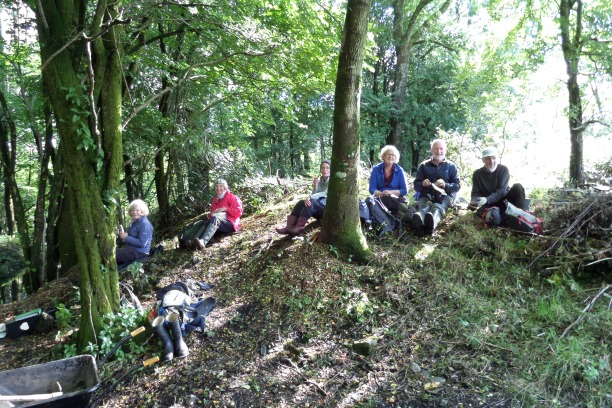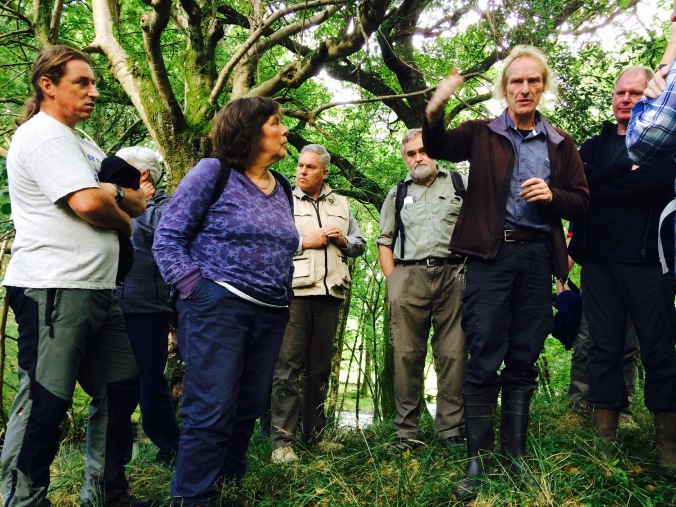The excavation is now over; a week or so has past and the site has been backfilled. But with that period away from the site we can at last recap on what we have had. I think it is safe to say that the results have exceeded all our expectations.

The backfilled main site
We are still some what uncertain about the interpretation but we are definitely moving in the right direction. In the main site, we have a wheel pit, what we are presently interpreting as an anvil base, the possible mounting for a trip hammer and some ancillary buildings.

The aerial view of the main site showing the hammer scale platform, anvil base, wheel pit and trip hammer mountings in the top part of the image

The anvil base
But what is most significant is an extremely dense floor composed of hammer scale, which has a straight edge to the south-west and would appear to define the edge of the building belonging to the floor. The significance of the floor is considerable, as hammer scale is produced when iron is repeatedly hit by a hammer (hence the name) and is a typical by-product of the refining stage of iron production. What was not found on this site was slag which is produced from the primary iron production. So we are having to change our whole interpretation; so what we have been calling the bloom forge site is not a bloom forge, but a refinery forge.
So if this is not a bloom forge, where is the documented bloom forge. If we then look to the upper site where we put a series of trenches, there we found a huge amount of slag and we had initially interpreted this as being the site of an early bloomery. We got the authoritative expert on slags, Dave Starley, to look at that site and he quickly concluded that there was no tap slag, which is the product of a bloomery. So if this is not the site of a bloomery, could this be the site of the bloom forge and this very red slag be the product of that very different iron working process. Well, at the moment this is out best guess, but we are awaiting confirmation from Dave on this. So what we have called a bloomery is not a bloomery but instead may be a bloom forge. Confused ? well in that case welcome to the world of archaeology where interpretations are continually raised and condemned as we move hopefully towards the direction of a truth.

Excavating into the red slag on a very wet day
What ever the interpretation, this is a fantastic success and so much more than we ever hoped for, and takes us an enormous way towards understanding the whole process of iron manufacture processes in the eighteenth century. This success is though down to the considerable support and help from all the volunteers who put up with some dreadful weather on this route of discovery. So I would like to put out my heart felt thanks to everyone that has contributed to the survey and excavation. We will let you know more as we get the results back and then we will have a presentation to outline the findings in more detail.
Jamie Quartermaine





























